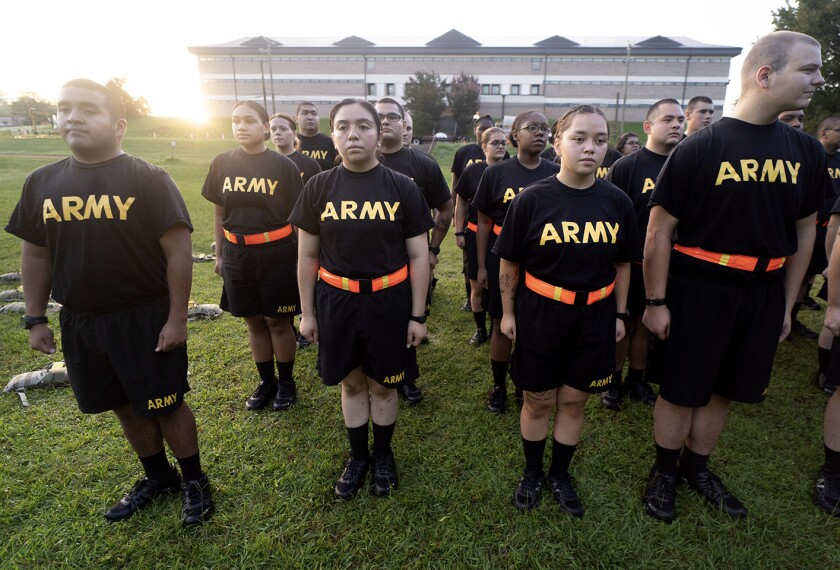Millions of high school seniors are claiming their diplomas, but that spring ritual is clouded by a persistent debate: Are the nation’s record-setting graduation rates inflated by quick-fix practices like credit recovery? Or are they real?
A group of researchers and advocates has produced a new analysis that supports the rosier interpretation.
Released Tuesday, as part of an annual report on graduation rates, the new approach offers a counterpoint to the argument that graduation rates have been driven up artificially when schools push struggling students into alternative programs, or bolster their completion data with catch-up courses, or when states and districts erroneously—or deliberately—misclassify students.
“We didn’t find a basis for that narrative,” said John Bridgeland, the CEO of Civic, which produces the “Building a Grad Nation” report with Johns Hopkins University, America’s Promise Alliance, and the Alliance for Excellent Education.
But the new index drew skeptics of its own. “It doesn’t do what they claim,” said Michael Cohen, the president of Achieve, which studies graduation-rate trends.
“If you want to address skepticism about increases in graduation rates because they’re not matched by increases in academic performance, AP scores and 8th grade [NAEP] scores don’t accomplish that.”
A New Way to Test the Grad Rate?
The 2019 “Grad Nation” report analyzes graduation-rate data for the class of 2017, which was released in January by the U.S. Department of Education. Those numbers showed yet another all-time high: 84.6 percent of students completed high school within four years.
The report’s authors added a new analysis to the 10th annual report. Its new “secondary school improvement index” uses three things to test the legitimacy of the rising graduation rate between 2011 and 2017: math and reading proficiency on the 8th grade National Assessment of Educational Progress, or NAEP, and the percentage of students who score 3 or higher—the level often used to grant college credit—on Advanced Placement tests.
The idea behind the index: If rising graduation rates are based on real achievement, NAEP scores and AP performance would show improvements, too.
The researchers found that in two-thirds of the states, rising graduation rates were accompanied by solid progress on at least two of the other measures. Twelve states showed improvements on all three measures as well as the graduation rate.
The four most populous states—California, Florida, New York, and Texas—buttressed the authors’ argument. Those states, which together educate about one-third of the nation’s students, demonstrated progress on two or three of the additional measures along with rises in their graduation rates.
But even in this new, more upbeat analysis, about a third of the states didn’t meet the mark. Their graduation rates rose over that six-year period, but they didn’t improve their performance on two or more of the additional measures in the index. In Alaska, for instance, the graduation rate gained 10.2 percentage points, while average NAEP proficiency dropped 4.9 points in math and 6 points in reading.
States Raise ‘Red Flags’
Two states—Maine and Montana—rated “red flag” warnings in the report because their graduation rates rose with no corresponding progress in any of the three other measures. Montana’s graduation rate rose 3.8 percentage points between 2011 and 2017, while its NAEP proficiency dropped 8.2 points in math and 6.4 points in reading, and the percentage of students earning 3 or higher on AP flatlined. Neither state responded to Education Week’s request for comment.
The limitations of the index were on display, as well. Nevada scored high, since its NAEP reading proficiency and AP college-ready scores rose while its graduation rate soared nearly 19 points in six years.
The research team looked more closely to see what drove Nevada’s big grad-rate boost. The state stopped requiring seniors to pass exit exams to graduate, and created more ways for students with disabilities to earn diplomas. Those changes, while “well-intentioned,” the report said, “raise concerns that the sizable jump in the state’s graduation rate is influenced by changes in requirements rather than demonstrable improvements.”
Jonathan Moore, Nevada’s deputy superintendent of student achievement, defended the policies as important ways to ensure that all students have access to the curriculum and multiple ways to demonstrate mastery. “I resent the conclusion or inference that increases in the grad rate are the reflection of policy changes alone,” he said in an email to Education Week.
Graduation-rate skeptics have pointed to 12th grade NAEP scores, and SAT and ACT scores, in arguing that there’s reason to doubt the legitimacy of graduation rates. They ask: How can more diplomas signify that more students are reaching mastery when college-admission and 12th grade NAEP scores have barely risen, or stayed flat?
The Civic/Johns Hopkins team argues that 8th grade NAEP and AP are better measures to use in testing trends in the graduation rate.
The 8th grade NAEP reflects all students, unlike its 12th grade counterpart, which misses students who’ve already dropped out. Likewise, not every student takes the SAT or ACT. Improvements in 8th grade NAEP scores are a sign that elementary and middle schools are doing better preparing students for high school, they argue. And the AP scores support the theory of real grad-rate gains by showing the portion of each class that’s ready for college-level work.
Cohen disagreed. Studies have shown, he said, that rising 8th grade math achievement is often not sustained in the high school years. Using AP as a proxy for high school mastery is also flawed because it doesn’t include all students, he said.
“Let’s not lose sight of the fact that it’s still better for more students to be graduating,” he said. “But we also shouldn’t lose sight of the fact that improvements in the graduation rate are still very imperfect reflections of any gains in academic achievement.”






